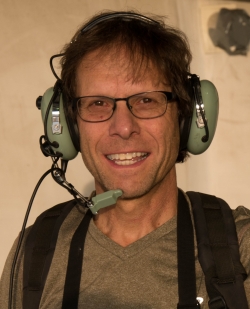
Graham Feingold
Program Lead
Clouds, Aerosol, & Climate
NOAA Chemical Sciences Laboratory
325 Broadway, R/CSL9
Boulder, CO 80305 USA
Affiliation
NOAA
Graham Feingold is a research scientist at NOAA's Chemical Laboratory in Boulder, Colorado. His interests lie in aerosol-cloud-precipitation interactions and implications for climate change. His focus is on process level studies using high resolution models and observations (aircraft and surface remote sensing) at the cloud scale (10s of meters to 10s of kms). He received his PhD in Geophysics and Planetary Sciences (summa cum laude) from the Tel Aviv University in 1989. His research interests include lidar and radar remote sensing of clouds and aerosol, modeling and remote sensing of aerosol-cloud interactions ("indirect effects"), "cloud burning" or the "semi-direct effect," and cloud processing of aerosol through multiphase chemistry. He has authored or co-authored more than 200 peer-reviewed articles on these subjects. Feingold was a lead author on the IPCC AR5 Chapter 7 (Clouds and Aerosols), an is associate editor of the online journal Atmospheric Chemistry and Physics (ACP), a contributor to the Climate Change Science Program, and a chapter author of the International Aerosol-Precipitation Scientific Assessment Project. He currently serves on the Aerosol-Cloud-Precipitation-Climate (ACPC) steering committee, and the NASA Aerosol and Cloud-Convection-and-Precipitation (A-CCP) Scientific Community Cohort (SCC) Advisory Group.
Education
1989: Ph.D, Geophysics (summa cum laude),
Department of Geophysics and Planetary Sciences, Tel Aviv University.
1985: MSc, Geophysics (summa cum laude),
Department of Geophysics and Planetary Sciences, Tel Aviv University.
1982: B.Sc, Geophysics and Atmospheric Sciences,
Department of Geophysics and Planetary Sciences, Tel Aviv University.
Research
Aerosol-Cloud Interactions, Cloud Microphysics, Aerosol Direct and Indirect Effects, Surface remote sensing of aerosol-cloud interactions, Airborne measurements of Aerosol and Cloud properties, Self-Organization and Emergence in Dynamical Systems.
Current Topics
Emergence and Self-Organization in Cloud Fields
Aerosol Effects on Precipitation
Small cumulus clouds: their importance for climate and their response to aerosol perturbations
last modified: January 7, 2025
